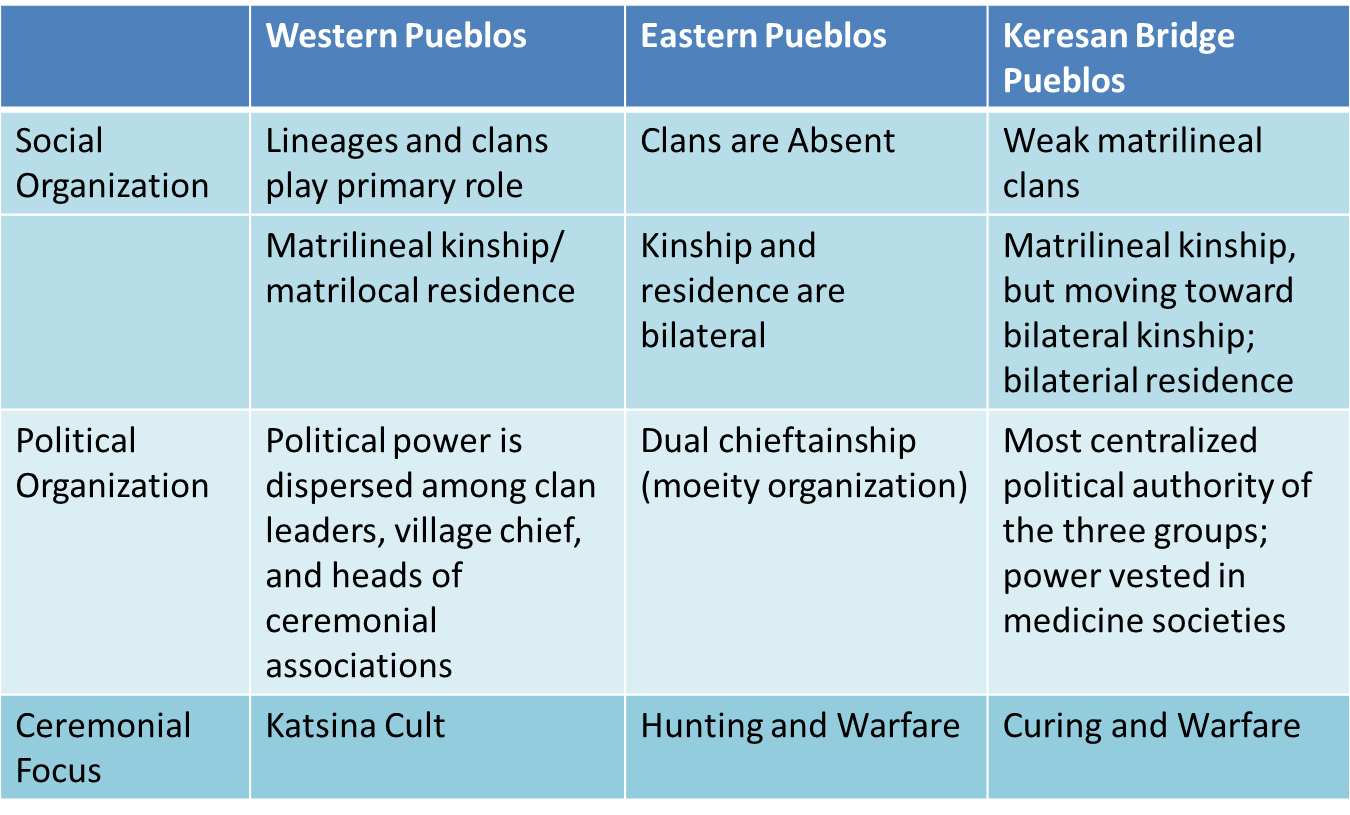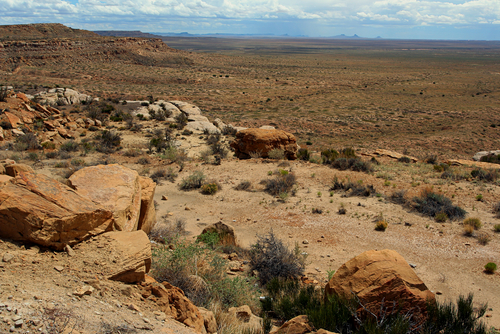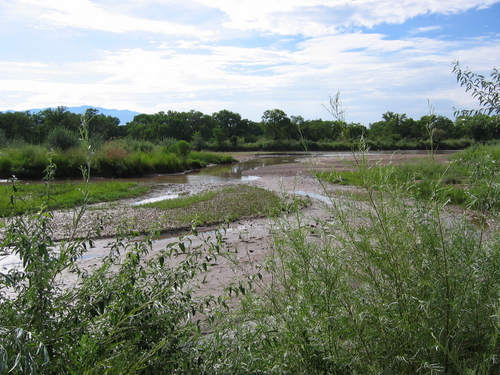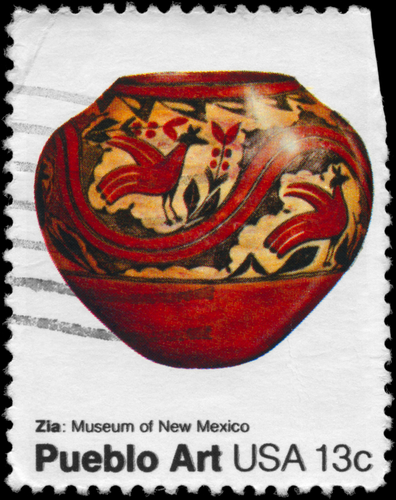Regional Differences
The Puebloan people occupy an area characterized by a high degree of environmental diversity. This diversity, in turn—combined with the varying affects of European contact—has impacted the social practices and political organization of the villages. Although there is quite a bit of variation between the pueblos, anthropologists see three distinct patterns, which- in general- vary as one moves from the west to the east

===========================================================
|
WESTERN PUEBLOS The western pueblos are Hopi, Hano, Laguna, Acoma and Zuni. These pueblos are located away from major watercourses, where large-scale irrigation is not possible.The subsistence economy of these pueblos is based primarily on floodwater farming (the capture of runoff after rains) and dry farming (dependent upon rainfall) techniques. Agriculture is carried out in small, family-owned or clan-owned fields, using relatively simple technology. Matrilineal clans play a primary role in socio-political organizations; it is the clan, for example, that controls access to agricultural fields and ceremonial knowledge. Political power is relatively dispersed among clan and/or lineage leaders, village chiefs, and religious leaders, though the greatest power (religious and secular) is yielded by the religious leaders. The kachina cult, focused on bringing the much-needed rains for the agricultural fields, is important. |
|
|
|
|
View from the Hopi Mesas Source - Shutterstock # Image ID:1730994 |
Kachina doll Source - By Hnapel (Own work) [CC BY-SA 4.0 (http://creativecommons.org/licenses/by-sa/4.0)], via Wikimedia Commons |
|
EASTERN PUEBLOS In contrast, the so-called eastern pueblos are located in the lush Rio Grande valley, where irrigation agriculture is possible. In these pueblos, clans are weak or absent and instead the townspeople are organized into larger, non-kin units called moeities. (Each town has two moeities, and each person belongs to one moiety or the other). Religious leaders are again important, but their power is limited to religious matters. Authority in secular matters resides in two secular leaders operating within a system of dual chieftainship. Under this system, each moeity is represented by a tribal chief, one of whom governs in the winter and spring and the other of whom governs in the summer and fall. Thus, among the eastern pueblos, the moiety has replaced clans as the primary unit of social organization, and it is the moiety that organizes people for communal projects and activities. Inheritance is bilateral, the kachina cult is weak or absent, and special sodalities- or social/ceremonial organizations- play an important role in the communities. The kachina cult is only weakly developed and instead their ceremonies focus on hunting and warfare.
|
|
|
Rio GrandeValley Source - Shutterstock # Image ID:207643 |
|
|
|
KERESAN BRIDGE PUEBLOS Finally, intermediate between these two differing patterns are the Keresan bridge pueblos (Zia, Santa Ana, San Felipe, Santo Domingo, and Cochiti). Among these pueblos, matrilineal clans and lineages are present, but they do not hold the power that they do in the western pueblos. Instead, power is vested in medicine societies which coordinated the needed communal tasks and who allocate land. The kachina cult is only weakly developed, and instead their ceremonies focus on curing and warfare. Kinship is matrilineal, but moving toward a system of bilaterality
|
|
Stamp showing Pottery of Zia Pueblo Source - Shutterstock # Image ID:98381888 |
|
Click next page to continue.


_01.jpg)

